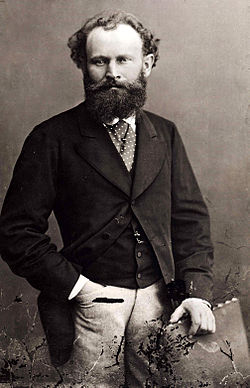

In 1863 the French society was suffocated by indignation – in the Salon was displayed a picture of Edouard Manet “Music in the Tuileries.” She was blown away by criticism. The work was deemed unfinished, but now most art connoisseurs believe that this canvas made a revolution in painting, becoming the first work in the style of impressionism.
The picture “Music in the Tuileries” is full of movement, many heroes do not pose, they are enthusiastically talking, not paying attention to the viewer. And while the work – this is a group portrait, in which Mane portrayed many of his friends and relatives. Here, the artist’s parents, and his younger brother, his beloved Susannah, his friend Charles Baudelaire, critic Zahariya Astru, artist Albert de Balrua and many other representatives of the capital’s beau monde. The master tried to convey an atmosphere of noisy fun, with which a crowd of Parisians are waiting for the start of a weekly concert in the Tuileries garden.
“Music in the Tuileries” is written in quick strokes, the composition is filled with sharp contrasts of light and dark spots, some silhouettes are clearly spelled out, while the rest of the characters in the picture are devoid of light and shadow modeling and seem vague. This idea that the form should not be stable was later taken up by the Impressionists.
The artist, who changed the course of the history of painting, Edouard Manet was born on January 23, 1832 in Paris. His father was the head of the department of the Ministry of Justice, the mother – the daughter of a diplomat. Parents were against the artistic field for their son, and under the pressure of his father he went to the seafaring school in 1847, where, in spite of the failed exams, he was given the opportunity to go on a sailing ship “Le Havre and Guadeloupe”. This journey further convinced Manet of his vocation, and, returning from the voyage, he entered the school of the artist Tom Couture.
After six years of study, Eduard Manet leaves school, tired of the academic framework. Now his training is copying works of old masters from the Louvre collection. The first fame came to the artist in the early 1850s, but the desire to “show life as it is” brought him a scandalous fame. Only in the early 1880’s his view of painting was unconditionally recognized. But by this time Edward Manet was seriously ill. In April 1883 he was amputated to his leg, and eleven days later he died. Edward Manet was buried in the status of one of the greatest and most extraordinary artists of his time.